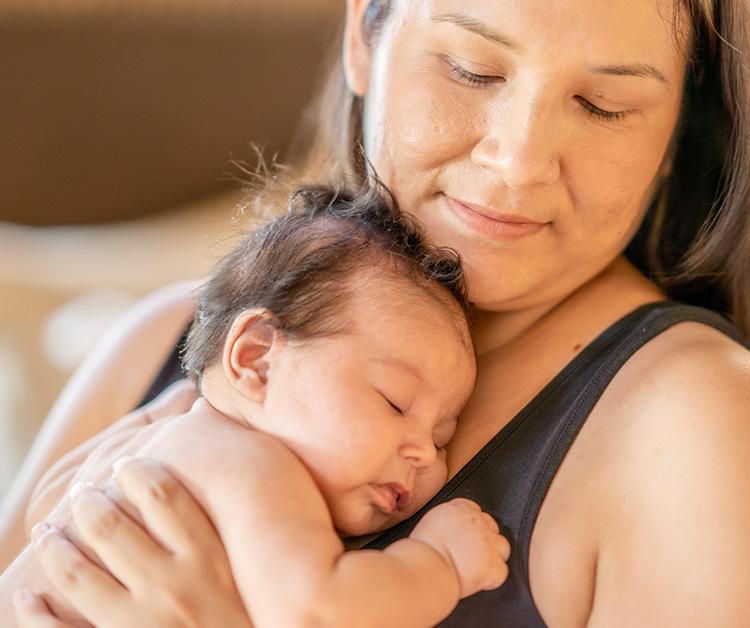Due to maintenance, rewards points for receipt uploads will be delayed. Thank you for your patience!

Finding loose strands of baby hair can send a new parent into a spiral of worry. Here's why there's no need to stress.
Some babies are born with a lush, thick head of hair, while others enter the world with a few adorable downy tufts. But at some point in the first few months of life, most babies will start to shed some of their hair. Fortunately, newborn hair loss is very common and normal—so read on to put any worries to rest and to find out when your baby's hair will return.
You might notice loose strands of hair after stroking your baby's head, shampooing their hair, or on their crib sheets. Especially for first-time parents, this type of infant hair loss can be disconcerting. Seeing loose baby hairs, or even a little clump of them, may make parents wonder if something's wrong—but in almost all cases, this is a normal process.
Baby hair shedding (also known as neonatal alopecia) usually peaks around two or three months old.1 This phenomenon, called telogen effluvium, coincides with hair loss in new mothers and is an aftereffect of pregnancy hormones.2 While you were pregnant, your hormones were extending your own hair growth period—resulting in thicker, fuller hair—but they were also influencing your baby's hair growth. Now that you and your baby are no longer sharing the same hormones, both of your hair growth cycles are resetting. That means that as you may be finding lots of strands in your hairbrush, you're also spotting tiny fallen newborn strands.
"Okay," you're probably thinking, "but when do babies grow hair again?" Since this loss of hair is the end of one hair growth cycle, your baby will begin to grow new hair soon after experiencing hair loss. Your baby's new color and texture could be different from that soft, downy newborn hair you've come to love, but you'll adore it just as much. By the time your baby turns one, they'll probably have a thick head of hair.
Separately, you may find that your baby develops a bald spot on the back of their head.3 Here, the cause is friction, usually from moving their head in the crib or car seat. Again, as the newborn hair is replaced by new strands, that bald spot will get filled in. Truth be told, though, babies are scrumptiously cute whether their heads look more like Charlie Brown or Rapunzel—so enjoy these changing hairstyles while they're still little.
Curious to know how else your body might change during your newborn's first few months? Learn how bodies are different before and after pregnancy.
Reference
All information on Enfamil, including but not limited to information about health, medical conditions, and nutrition, is intended for your general knowledge and is not a substitute for a healthcare professional's medical identification, advice, or management for specific medical conditions. You should seek medical care and consult your doctor or pediatrician for any specific health or nutrition issues. Never disregard professional medical advice or delay seeking medical treatment, care, or help because of information you have read on Enfamil.